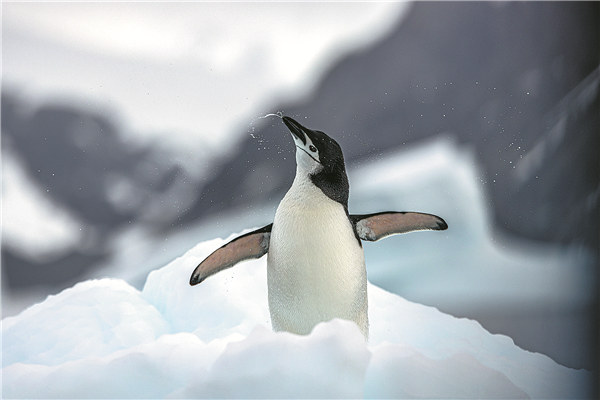

Understanding people
While working on these projects, Qiubi said she developed a passion for documenting the stories of grassroots communities and their residents. "One of the most challenging targets in photography is people," Qiubi said. "While working on my documentary projects, I often consider myself not just a photographer, but also a social worker."
When she approached her subjects, she preferred to keep her camera hidden in her bag initially. She would engage them in conversations, spend time getting to know them and partake in their daily lives before even thinking about taking a single photo. Her approach was to immerse herself in their stories before capturing them through her lens. "At first, I tried to build an emotional connection with my subjects," she said. "My gender has often been one of my advantages."
To complete a project, she once stayed in a village in the Garze Tibetan prefecture of Sichuan province for two months, accompanying villagers on their farm chores and making a pilgrimage to their sacred mountains. Sometimes she had to sleep in yak pens on alpine meadows.
Her experiences have deepened her understanding of the environmental difficulties that rural people contend with, she said.
One particular trip etched deeply in Qiubi's memory was a journey to the Jiatang Grassland in the Yushu Tibetan autonomous prefecture in Qinghai province.
It was late spring when she found herself engulfed in a massive sandstorm while visiting the local herdsmen. The fierce winds, laden with heavy sand and hail, shook her vehicle violently, causing her tripods to topple outside. As she struggled to retrieve her cameras, the wind became so intense that she found herself unable to return to the safety of her car, feeling as if she was stranded in a desert wasteland.
"It was a stark reminder of the negative impact of climate change and environmental degradation on the area," she said. "To me, it was just a singular experience, but for the nomadic herders there, it was probably a regular struggle."
Another experience that has had a lingering impact on her was her project at Wangjinzhuang village in Shexian county, Hebei province.
Nestled at the foot of the Taihang Mountains, the area faced severe droughts due to its rocky terrain and arid climate. To eke out a living in the harsh environment, the locals resorted to carving terraced fields out of the mountains. They upheld age-old traditions of seed preservation and sustainable farming practices, maintaining their traditional way of life for over seven centuries.
Documenting an agricultural heritage protection project conducted by a professor at China Agricultural University in Beijing, Qiubi made over 10 visits to the village over three years, witnessing firsthand the resilience and wisdom of the locals in harmonizing with nature.
"By planting different crops on their fields, the Wangjinzhuang villagers have managed to protect 171 traditional varieties," Qiubi said.
Despite their adaptive practices, she said, the community faced unprecedented challenges in recent years. From severe droughts in 2019 to devastating floods in 2021 and plummeting crop yields due to prolonged cold spells in 2022, the villagers grappled with the harsh realities of climate change.
With her profound understanding of issues such as environmental conservation and climate change, Qiubi was invited to curate a photo exhibition during the first part of the United Nations Biodiversity Conference (COP 15) in Kunming, Yunnan province, in 2021, and share her insights during the second part of the conference in Montreal, Canada, in 2022.
Her photos depicting climate change adaptation were exhibited in Hong Kong last year, and that same year, she curated an exhibition on the topic for a charitable foundation in Beijing.
"I use my cameras and lenses to document various social issues, and through my curating, I expect more people to gain deeper insight into these issues," Qiubi said. "Sparking people's awareness on some pressing social issues was a meaningful step toward inspiring tangible change."
She said that she has curated one or two photo exhibitions a year for the past several years.